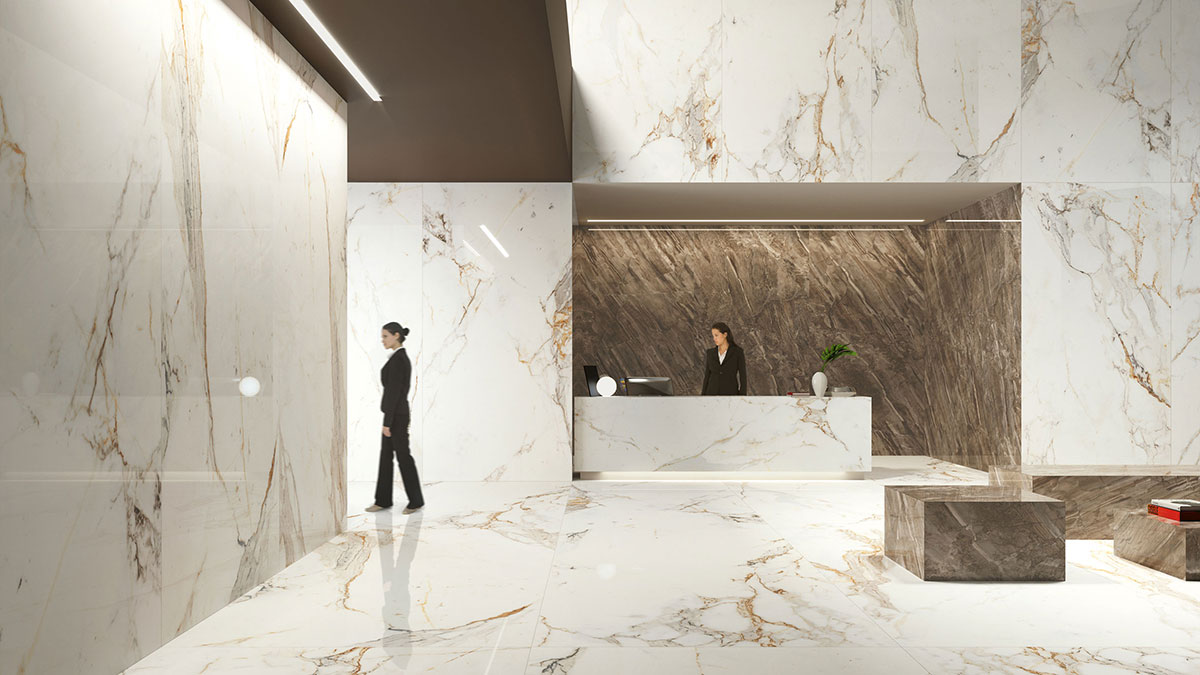Marble is one of the important building materials, having been utilized since earlier period. Marble is a greater material that is produced in big slabs and then cut into tiles and mosaic pieces. You may have forgotten about the big slabs by the time it arrives at a tile store, but they may still be utilized for flooring and countertops.
People nowadays appreciate the sophisticated and clean appearance of marble slabs, but one of the things that prevent house owners from installing marble slabs in their homes is the expensive cost of it. Marble tiles readily solve this problem since they resemble the appearance of actual marble while also being cost-effective.
Tiles and marble are both prominent building materials. There are certainly important factors to consider before determining whether to use marble slabs or marble tiles. Here are some of the elements to consider before making your selection.
7 Difference Between Marble Tiles And Marble Slabs
The major distinctions between marble tiles and marble slabs are as follows:
Appearance or look
The primary distinction between marble slabs and marble tiles is the production method. Marble slabs are often acquired in natural form from quarries and then separated into appropriate sizes and shapes, whereas marble tiles are man-made materials that go through several phases before being cut. Marble slab quality varies depending on the quarries from which they are derived.
Even when recovered from mines, the texture of marbles might differ from one piece to the next. Marble tiles, on the other hand, have consistent quality and texture since they are manufactured in a consistent manner. This makes them perfect for usage in the living room and bedroom, providing a consistent appearance.
Variety and Finishes
Marble slabs come in a variety of styles and patterns, but not all of them are accessible in India, making imported slabs either scarce or excessively costly. On the other hand, marble tiles come in patterns and designs influenced by different marbles all over the world.
Marble slabs are available in black, green, white, brown, and grey colors. Marble is polished, honed, tumbled, and brushed to finish. To get a glossy look, polished marble is employed. For a matte appearance, marble sand might be utilized. Where, marble tiles are available in a variety of finishes, including glossy, matte, textured, unglazed, honed, and polished. Suitable for use in the home.
Durability
Marble Tiles are tougher and more durable than slabs because they are thicker. In fact, marble tiles are supposed to be earthquake and fire-resistant. These tiles are extremely durable and retain their dazzling appearance even after many years of use.
The same cannot be applied to slabs, which will crack and break when the grout is dragged out during an earthquake. Slabs cannot withstand these natural disasters. Marble slabs are more porous, making them more susceptible to damage and less durable than marble tiles.
Weight and Thickness
Another difference between slabs and tiles is their weight and thickness. Slabs are larger and heavier than tiles, the flooring underneath them must be prepared to not only hold the weight but also to allow for the thickness of the slab and the muck beneath it. In the other direction, marble tiles are less heavier than slabs. It may readily fit anywhere without cracking. And with good care, it will last longer for several years.
Quality
It is tough for a consumer to select the highest quality marble from a variety of marble slabs and tiles. The majority of individuals choose marble slabs based on their hue and shade.
In marble tiles, there is no need to be concerned about the quality because they are normally supplied through approved corporate dealers, which means you do not have to rely on any individual vendors. Marble tiles of the highest quality are widely accessible around the world, and retailers also sell them.
Maintenance
The majority of marble slabs are not stain resistant, thus anything spilled on them may leave lasting marks and spots. Because slabs are real marble, they respond to liquids and erode readily. They can only be cleaned by polishing them. Marble is a high-maintenance product since it requires frequent polishing to keep its perfect appearance.
Marble tiles, on the other hand, do not require this and may survive for a long time without being polished. Marble tiles are not readily damaged or scratched, and if something does happen, they are easily cleaned. They retain their luster even after many years of usage.
Price
Slabs are more costly than tiles since they are only accessible in certain regions of India. Furthermore, their transportation costs are relatively significant, and the potential for damage is also considered. Tile flooring, on the other hand, is less expensive than slab flooring since it is manufactured in a number of factories. The cost of tiles is mostly determined by the style and brand that you select. In addition, the tiles do not need to be regularly polished which reduces the maintenance cost.
